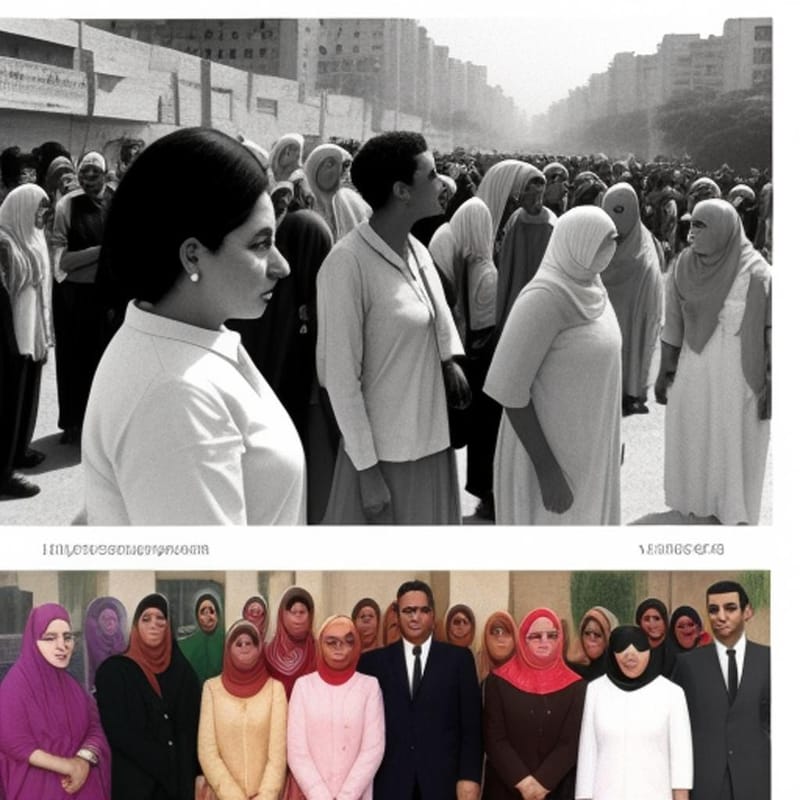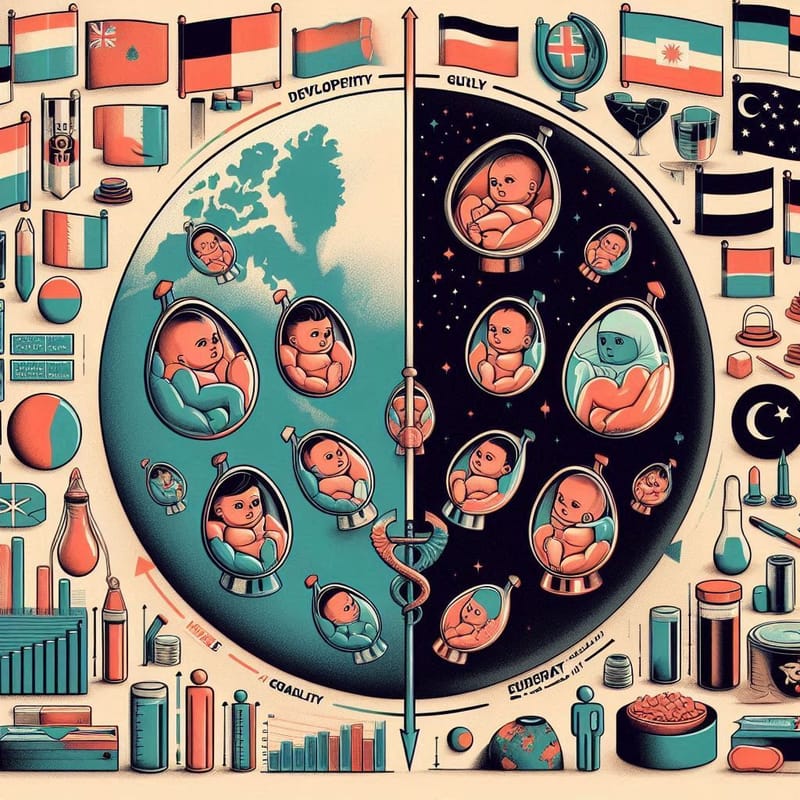Zafer Büyükkeçeci
Research Scientist
Max Planck Institute for Demographic Research
Konrad-Zuse-Straße 1
18057, Rostock, Germany
CV
Publications

Lives in Welfare States: Life Courses, Earnings Accumulation, and Relative Living Standards in Five European Countries
How do work and family life courses differ in welfare states with varying emphasis on the state, market, and family for welfare provision? We compare life courses until mid-life in Denmark, Finland, the United Kingdom, former West Germany, and reunified Germany. Longitudinal life course analyses using administrative and survey data support three main conclusions. First, young adults who accumulate high earnings experience similar life courses in all countries. In contrast, typical life courses of low earners, particularly their family lives, differ widely between European welfare states. Second, constellations of decommodifying, familizing and defamilizing policies shape cross-national differences in typical low-earning life courses, their primary sources of economic support, and relative living standards. Third, women are most likely to experience low-earning life courses in familizing welfare states (Germany, United Kingdom) compared to relative gender equality among low-earning life course types in welfare states that combine high defamilization and decommodification (Denmark, Finland).
Learn More
Parent–Child Relationships Following Gray Divorce: Stronger Ties With Mothers, Weaker Ties With Fathers
With rising gray divorce rates, older individuals face heightened risk of social isolation, highlighting the significance of adult children as a vital source of solidarity in the absence of a spouse. Simultaneously, gray divorce may undermine parent–adult child relationships and weaken the core of the family safety net of older persons. This study examined the consequences of gray divorce for parent–child relationships.
Learn More
Adult sibling relationships: The impact of cohabitation, marriage, separation, and childbearing
Understand how various life events, such as cohabitation, marriage, separation, and childbearing, shape the dynamics of adult sibling relationships and influence individual lives.
Learn More
Rising Patriarchy and Declining Economic Opportunity: Life Courses and Social Change in Egypt between 1965 and 2018
Despite Egypt's economic growth and educational expansion, gender inequalities and a lack of economic opportunities for young adults persist. Existing studies on social change in Egypt often rely on aggregate trend indicators or focus on isolated point-in-time work or family outcomes. This study adopts a life course perspective to (1) trace cohort changes in work-family life courses for individuals born between 1956 and 1988 (N = 19,970) from 1965 to 2018, (2) assess gender inequality trends in life courses across cohorts, and (3) link different life course patterns to aggregate development indicators. Using retrospective data from the Egyptian Labor Market Panel, multichannel sequence and cluster analyses identify ten typical life course profiles that can be divided into: a state-structured life course; and various manifestations of family- and market-structured life courses. The economically secure state-structured life course declined in favor of rising market-structured and family-structured life courses. Gender inequality in employment increased across cohorts. GDP growth was associated with economically insecure market-structured life courses for men and family-structured life courses of economic inactivity for women. Cohort change in life courses was most rapid in the transition period from authoritarian socialism to unregulated crony capitalism (1980–1990) when cohorts born in the 1970s reached adulthood.
Learn More
Neighbourhood effects on early adulthood family life courses: A trajectory‐based approach
This study maps early adulthood family life courses from ages 15 to 28 and tests whether they are causally linked to neighbourhood conditions with an instrumental strategy in the United States using Add Health data. Results show that the risk of sorting into pathways typified by early childbearing regardless of relationship status was higher in disadvantaged neighbourhoods. The instrumental variable strategy further showed that pathways characterized by single parenthood and early marriage with multiple children increased significantly with neighbourhood disadvantage, whereas other significant associations disappeared in these analyses. Overall, the results highlight the importance of considering multiple family events as a process outcome to understand the impact of neighbourhood conditions. Indeed, neighbourhood deprivation may lead to life courses associated with nonconventional outcomes. While some of the observed neighbourhood effects may be driven by selection bias in the United States, not all effects are necessarily due to selection and depend on the longitudinal family trajectories. These results were supported by several robustness tests, including the use of an alternative instrumental variable, as the main models suggested weak identification.
Learn More
Does Re-Partnering Behavior Spread Among Former Spouses?
This study focused on individuals’ re-partnering behavior following a divorce and asked whether divorcees influence each other’s new union formation. By exploiting the System of Social statistical Datasets (SSD) of Statistics Netherlands, I identified divorced dyads and examined interdependencies in their re-partnering behavior. Discrete-time event history models accounting for shared characteristics of divorcees that are likely to influence their divorce and re-partnering behavior simultaneously were estimated. Findings showed that the probability of re-partnering increased within the first two years following a former spouse’s new union formation. Further analyses focusing on formerly cohabiting couples rather than divorcees also revealed significant associations in re-partnering behavior. Following a former romantic partner’s new union formation, women were exposed to risk longer than men, due to men’s quicker re-partnering. These results were robust to the falsification tests. Overall, findings indicate that the consequences of a divorce or breakup are not limited to the incidence itself and former romantic partners remain important in each other’s life courses even after a breakup. With the increasing number of divorcees and changing family structures, it is important to consider former spouses as active network partners that may influence individual life courses.
Learn More
On the relationship between fertility, development and gender equality: A comparison of western and MENA countries
The changing macro-level relationship between fertility and development (ie, the standard of living, health and education) from negative to positive for the most advanced economies has received considerable attention recently. Using aggregate data, we compare the relationship between fertility and development in Western countries with the Middle East and North Africa (MENA) region, where fertility rates are higher than in other regions with identical levels of development. To understand the drivers of this association, we further link fertility to the components of development as well as female labour force participation separately. Our findings show that fertility and development were positively associated for only a short period in Western countries and that the relationship turned negative again in recent years. Recent data also show that there is no significant relationship between fertility and development in MENA countries. These findings indicate that the well-acknowledged theories of fertility and development do not apply in every context.
Learn More
Sibling influence on family formation: A study of social interaction effects on fertility, marriage, and divorce
This study examined social interaction effects on family formation and dissolution, asking whether fertility, marital, and divorce behavior spread in the sibling network. Using panel data from the German SOEP (1984 – 2016; N = 4,521 individuals), we estimated discrete-time event history models with random effects at the individual to examine whether siblings’ transitions to parenthood, marriage, and divorce influence an individual’s chance to have children, marry, and divorce. Results show that the hazard of becoming a parent increased in the short term after a sibling had a child. Similarly, the hazard of getting married increased following a sibling’s marriage. Tentative evidence also suggested that transition rates to divorce increased in the longer term following a sibling’s divorce. Furthermore, we found evidence for social interaction effects across different transitions in the process of family formation, as the transition rates to marriage decreased after a sibling divorced. Conversely, the risk of divorce decreased following a sibling’s entry to marriage. Overall, these findings illustrate that the impact of network partners on demographic behavior is not limited to the same behavioral domain and might be negative as well as positive.
Learn More
Cross-country differences in anxiety and behavioral response to the Covid-19 pandemic
The Covid-19 pandemic is affecting health, social, mental, and economic well-being worldwide, and taking precautions and co-operation is crucial at the individual level. Using data from various sources, this study examines cross-country differences in anxiety levels and behavioral responses to the Covid-19 pandemic. Specifically, I investigate how economic preferences and development at the country-level are associated with anxiety and behavioral response and whether these factors explain contextual differences. Results show that anxiety was less common among more patient and developed societies. Yet, altruistic societies suffered more from anxiety. Higher levels of positive reciprocity and trust were also associated with stronger health-protective behavioral responses. These findings are important in eliciting the consequences of the Covid-19 pandemic for different societies during the ongoing pandemic.

Family, firms, and fertility: A study of social interaction effects
Research has indicated that fertility spreads through social networks and attributed this phenomenon to social interaction effects. It remains unclear, however, whether the findings of previous studies reflect the direct influence of network partners or contextual and selection factors, such as shared environment and common background characteristics. The present study uses instrumental variables to improve the identification of social interaction effects on fertility. Using data from the System of social statistical data sets (SSD) of Statistics Netherlands, we identify two networks—the network of colleagues at the workplace and the network of siblings in the family—to examine the influence of network partners on individual fertility decisions. Discrete-time event-history models with random effects provide evidence for social interaction effects, showing that colleagues’ and siblings’ fertility have direct consequences for an individual’s fertility. Moreover, colleague effects are concentrated in female-female interactions, and women are more strongly influenced by their siblings, regardless of siblings’ gender. These results are the first to demonstrate spillover effects across network boundaries, suggesting that fertility effects accumulate through social ties not only within but also across different domains of interaction.
Learn MoreContact
- Max Planck Institute for Demographic Research, Konrad-Zuse-Straße 1
- 18057
